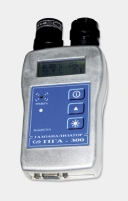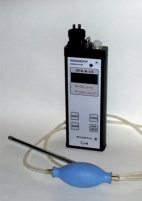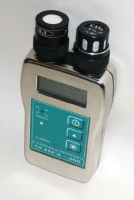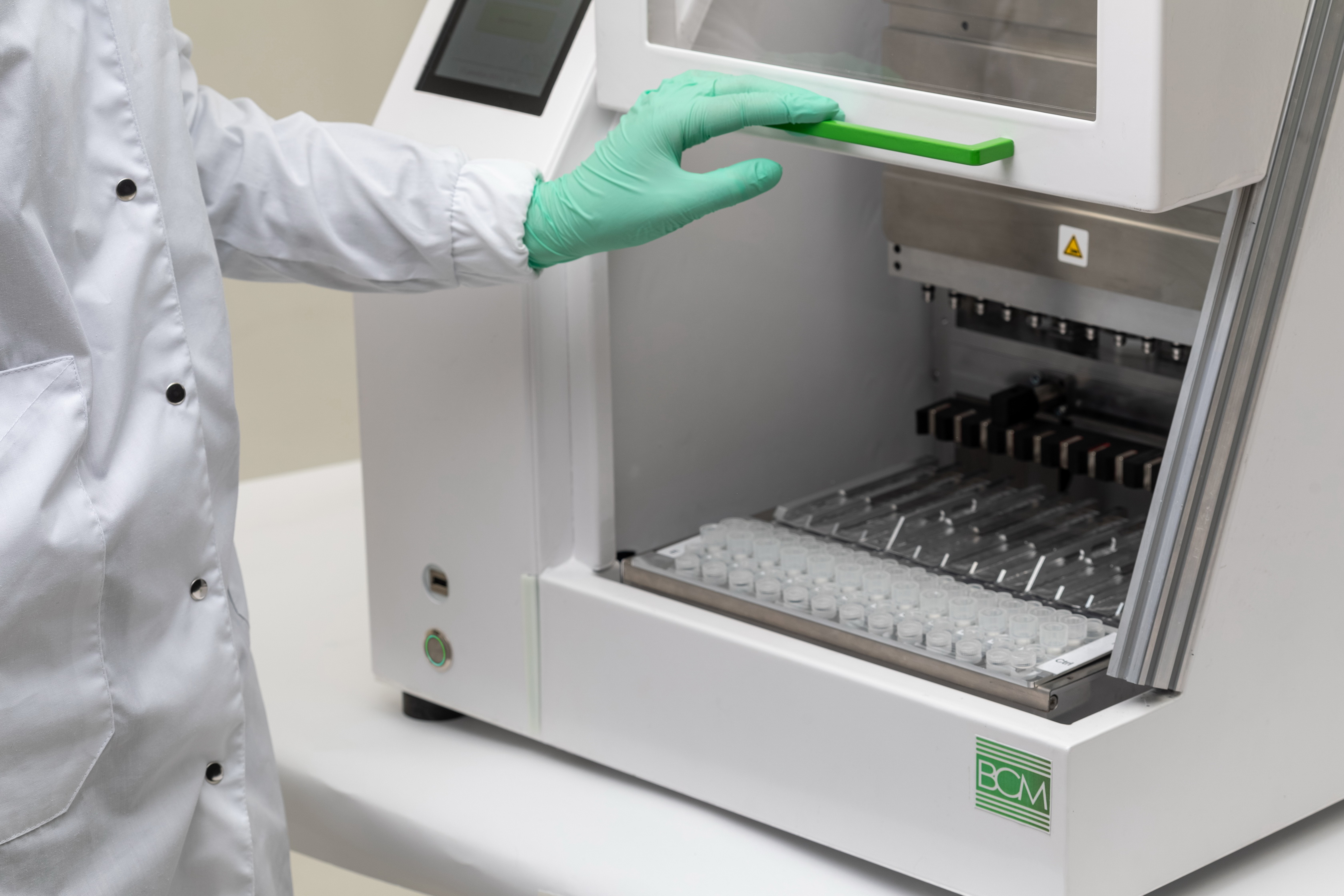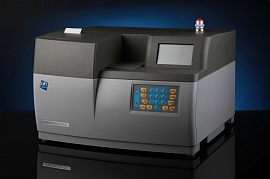NASHA LABA possibilities
Back to search results
Chlorine and Sulfur Analyzer SPECTROSCAN CLSW
The device is developed on the basis of the analyzer SPECTROSCAN SW-D3, allows you to determine the mass fraction of organochlorine compounds in oil according to GOST R 52247-2004 (method B) and GOST 33342-2015 (method B), the sulfur content in automotive fuel, oil and liquid petroleum products in accordance with GOST R 52660-2006 / GOST ISO 20884-2016 and GOST R 53203-2008 / GOST 33194-2014, as well as to determine the mass fraction of chlorine and sulfur in any liquid samples in accordance with standardized techniques (methods).
Implements arbitration methods for determining the mass fraction of organochlorine compounds in oil and the sulfur content in automobile fuel.
The analyzer has successfully passed the interlaboratory tests under the guidance of JSC "VNII NP" (TK31). As a result of the tests, the accuracy of the method for determining the mass fraction of organochlorine compounds using the SPECTROSCAN CLSW analyzer was found to comply with the requirements of GOST R 52247-2004, method B, and the accuracy of the method was determined in the range of the mass fraction of organochlorine compounds from 1 ppm to 50 ppm.
Determination of the mass fraction of organochlorine compounds in oil involves sampling of oil, distillation of naphtha fraction (204 ° C), washing of naphtha from hydrogen sulfide and inorganic chlorides. An internal standard is introduced into naphtha extracted from oil – a solution of bismuth in a non-polar solvent and an analysis is carried out.
When determining the sulfur content, the analysis is carried out without additional sample preparation.
The analyzer is a proprietary development of NPO "SPEKTRON". The device is manufactured in St. Petersburg mainly from domestic components. There is a conclusion of the Ministry of Industry and Trade on the production of products in the territory of the Russian Federation.
The operator's actions when performing measurements are minimized:
- the number/name of the sample is entered from the built-in keyboard;
- the sample is poured into two cuvettes;
- the obtained samples are placed in the analyzer and measurements are started.
The analyzer performs all subsequent actions automatically without operator involvement:
- calculates and displays the chlorine and/or sulfur content in the sample;
- calculates convergence - the difference in determining the mass fraction of an element in the first and second samples;
- prints measurement results on the built-in printer.
Implements arbitration methods for determining the mass fraction of organochlorine compounds in oil and the sulfur content in automobile fuel.
The analyzer has successfully passed the interlaboratory tests under the guidance of JSC "VNII NP" (TK31). As a result of the tests, the accuracy of the method for determining the mass fraction of organochlorine compounds using the SPECTROSCAN CLSW analyzer was found to comply with the requirements of GOST R 52247-2004, method B, and the accuracy of the method was determined in the range of the mass fraction of organochlorine compounds from 1 ppm to 50 ppm.
Determination of the mass fraction of organochlorine compounds in oil involves sampling of oil, distillation of naphtha fraction (204 ° C), washing of naphtha from hydrogen sulfide and inorganic chlorides. An internal standard is introduced into naphtha extracted from oil – a solution of bismuth in a non-polar solvent and an analysis is carried out.
When determining the sulfur content, the analysis is carried out without additional sample preparation.
The analyzer is a proprietary development of NPO "SPEKTRON". The device is manufactured in St. Petersburg mainly from domestic components. There is a conclusion of the Ministry of Industry and Trade on the production of products in the territory of the Russian Federation.
The operator's actions when performing measurements are minimized:
- the number/name of the sample is entered from the built-in keyboard;
- the sample is poured into two cuvettes;
- the obtained samples are placed in the analyzer and measurements are started.
The analyzer performs all subsequent actions automatically without operator involvement:
- calculates and displays the chlorine and/or sulfur content in the sample;
- calculates convergence - the difference in determining the mass fraction of an element in the first and second samples;
- prints measurement results on the built-in printer.
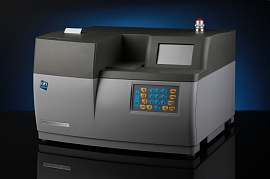
Sulfur Analyzer SPECTROSCAN SW-D3
The analyzer is designed to determine the mass fraction of sulfur in automotive fuel in accordance with GOST R 52660-2006 / GOST ISO 20884-2016, ASTM D6334, as well as in oil and petroleum products according to GOST R 53203-2008 / GOST 33194-2014, ASTM D2622, GB/T 11140-2008. Depending on the customer's needs, the analyzer is configured to work in accordance with a particular standard.
Implements an arbitration method for measuring the mass fraction of sulfur in automobile fuel of the third, fourth and fifth classes.
The device is designed specifically for high-quality and fast X-ray fluorescence analysis of fuel in accordance with the technical regulations "On requirements for automotive and aviation gasoline, diesel and marine fuel, jet fuel and heating oil", which establishes an arbitration X-ray fluorescence wave dispersion method for determining the mass fraction of sulfur in automotive fuels of the third, fourth and fifth classes.
The wave dispersion sulfur analyzer SPECTROSCAN SW-D3 is designed taking into account all the requirements for the process of X-ray fluorescence elemental analysis of low sulfur contents in petroleum products. The operator's actions when performing measurements are minimized:
- the number/name of the sample is entered from the built-in keyboard;
- the sample is poured into two cuvettes;
- the obtained samples are placed in the analyzer and measurements are started.
The analyzer performs all subsequent actions automatically without operator involvement:
- calculates and displays the sulfur content in the sample;
- calculates convergence - the difference in determining the mass fraction of sulfur in the first and second samples;
- prints measurement results on the built-in printer.
NPO Spektron
Saint Petersburg
Produced in: Saint Petersburg
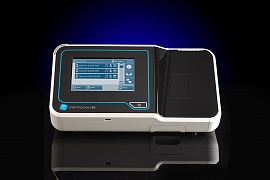
Sulfur Analyzer SPECTROSCAN SE
The analyzer is designed to determine the mass fraction of sulfur from 3 million-1 (ppm) in oil and petroleum products in accordance with GOST R 51947-2002, GOST 32139-2019, GOST R EN ISO 20847-2010 / GOST ISO 20847-2014, ASTM D4294, GB/T 17040-2019.
Implements an arbitration method for measuring the mass fraction of sulfur for oil, automotive fuels of class K2, K3, jet engine fuel, aviation gasoline, fuel oil and marine fuel, and is also used for operational control of sulfur content in automotive fuels of Class 4 and 5, gas oils, bitumen, lubricating oils and their components and other petroleum products.
The analyzer greatly simplifies the routine analysis procedure. Intuitive interface provides convenience and ease of use.
The analyzer is a proprietary development of NPO "SPEKTRON". The device is manufactured in St. Petersburg mainly from domestic components.
Minimum operator actions:
- calibration is selected and the name of the sample is entered;
- two cuvettes are filled with a sample;
- the obtained samples are placed in the analyzer and measurements are started;
- all subsequent actions are performed automatically:
- the average value of the mass fraction of sulfur is calculated and displayed;
- repeatability is calculated;
- the results are checked for compliance with the selected standard;
- measurement results are printed on the built-in printer and saved.
NPO Spektron
Saint Petersburg
Produced in: Saint Petersburg
May be interested in
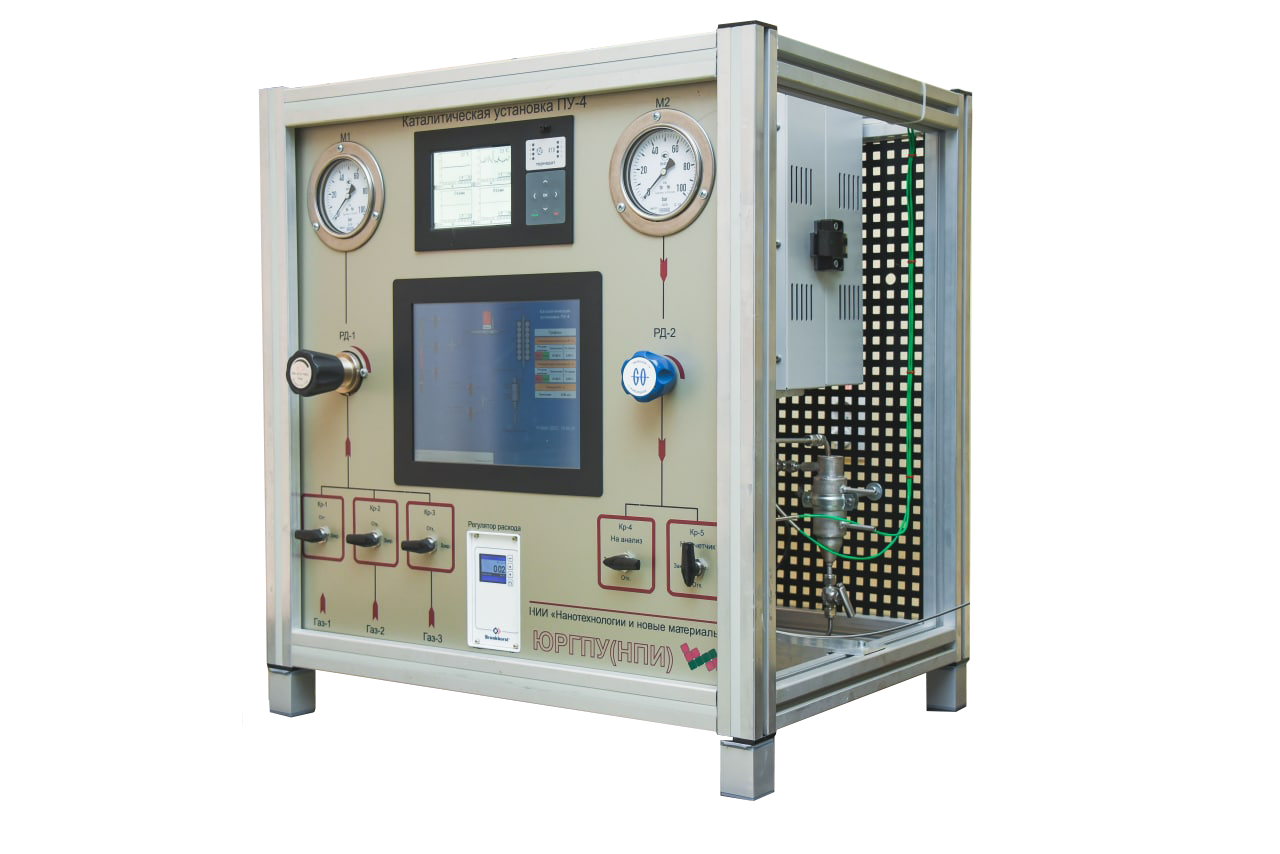
PU Desktop laboratory catalytic unit
The PU desktop laboratory unit is an automated installation based on a mini–reactor with a fixed layer that has a volume of up to 1.5 cm3. The PU desktop laboratory unit is designed to perform kinetic studies, evaluate the properties of catalysts, model catalytic processes, test the stability of catalysts and sorbents.
For maximum compliance with the customer's requests, the installation has a modular design with the possibility of adding new options.
Main advantages:
1. Compactness;
2. Real-time parameter monitoring;
3. Easy maintenance;
4. Operation safety;
5. User-friendly interface.
Applied tasks
1. Hydrogenation/dehydrogenation processes of hydrocarbons;
2. Fischer-Tropsch synthesis;
3. Catalytic cracking and isomerization;
4. Reforming of natural gases;
5. Hydrogenation processes;
6. Catalytic oxidation;
7. Hydrotreating processes.
Basic equipment
1. Gas supply unit
2. Reactor unit
3. Separation unit
4. Sampling unit
5. Unit for measuring the volume of the outgoing gas
6. Control unit
YURGPU(NPI) FGBOU VO "YURGPU(NPI) IMENI M.I.PLATOVA"
Novocherkassk
Produced in: Rostov region, Novocherkassk
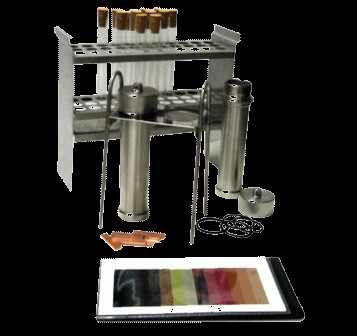
LAB-KMP kit for testing corrosion activity on a copper plate
The LAB-KMP kit is designed for testing the corrosion activity of petroleum products in accordance with GOST 6321-92 or ISO 2160. The kit is used in conjunction with LOIP LT thermostats and LOIP LB-200 precision thermostatic baths with a bath depth of 200 mm.
The composition of the kit:
GOST 6321-92
Tripod for test bombs 1 pc.
Test bomb 2 pcs.
Tripod for test tubes 1 pc.
Test tube P-2-16/150 20 pcs.
Cork cork 20 pcs.
Copper plate (40x10x2 mm) 50 pcs.
Sandpaper 10 sheets
Corrosion standard 1 pc.
ISO 2160
Tripod for test bombs 1 pc.
Test bomb 2 pcs.
Tripod for test tubes 1 pc.
Test tube P-2-26/150 11 pcs.
Cork cork 11 pcs.
Copper plate (75x12x2 mm) 50 pcs.
Sandpaper 10 sheets
Corrosion standard 1 pc.
LOIP
Saint Petersburg
Produced in: Saint Petersburg
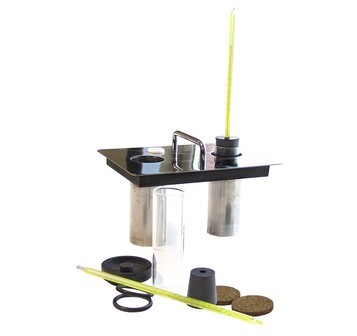
A set of LAB-CTT devices for determining the flow temperature of petroleum products
The composition of the kit:
LOIP FT-311-80 cryostat cover of special design 1 pc.
A flat-bottomed test tube with a label of 2 pcs.
Rubber ring-shaped gasket 4 pcs.
Stopper with a hole for a thermometer 2 pcs.
A disk made of cork 2 pcs.
Cooling bath cover 2 pcs.
LOIP
Saint Petersburg
Produced in: Saint Petersburg
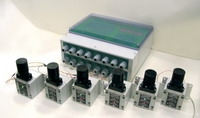
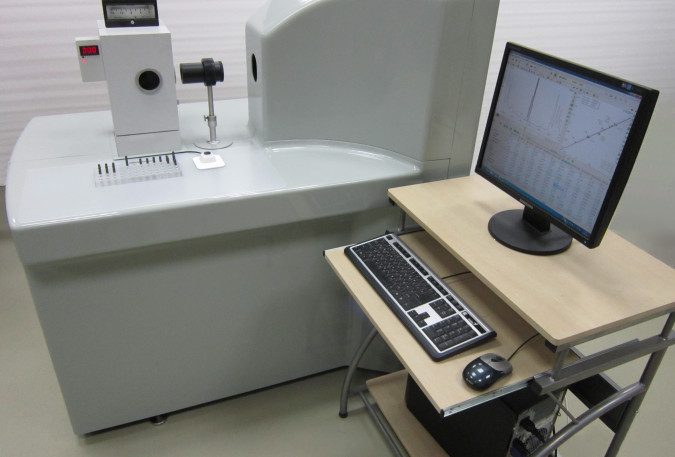
Diesel engine oil spectrometric analysis system "EXPRESS-OIL"
Diesel engine oil spectrometric analysis system "EXPRESS-OIL" is designed to analyze engine oils according to GOST 20759 and determine the concentration of wear elements of rubbing diesel parts, contaminants and additives in diesel engine oils during scheduled maintenance and repair of traction rolling stock in locomotive repair depots, as well as electronic accounting and analysis of dynamics data the content of wear elements in engine oils for each locomotive, as well as the determination of the composition of metals and alloys according to GOST, greases (according to CTCH-28/4, CTCHS-53) and other materials.
VMK OPTOELEKTRONIKA
Novosibirsk
Produced in: Novosibirsk

Sulfur Analyzer SPECTROSCAN SW-D3
The analyzer is designed to determine the mass fraction of sulfur in automotive fuel in accordance with GOST R 52660-2006 / GOST ISO 20884-2016, ASTM D6334, as well as in oil and petroleum products according to GOST R 53203-2008 / GOST 33194-2014, ASTM D2622, GB/T 11140-2008. Depending on the customer's needs, the analyzer is configured to work in accordance with a particular standard.
Implements an arbitration method for measuring the mass fraction of sulfur in automobile fuel of the third, fourth and fifth classes.
The device is designed specifically for high-quality and fast X-ray fluorescence analysis of fuel in accordance with the technical regulations "On requirements for automotive and aviation gasoline, diesel and marine fuel, jet fuel and heating oil", which establishes an arbitration X-ray fluorescence wave dispersion method for determining the mass fraction of sulfur in automotive fuels of the third, fourth and fifth classes.
The wave dispersion sulfur analyzer SPECTROSCAN SW-D3 is designed taking into account all the requirements for the process of X-ray fluorescence elemental analysis of low sulfur contents in petroleum products. The operator's actions when performing measurements are minimized:
- the number/name of the sample is entered from the built-in keyboard;
- the sample is poured into two cuvettes;
- the obtained samples are placed in the analyzer and measurements are started.
The analyzer performs all subsequent actions automatically without operator involvement:
- calculates and displays the sulfur content in the sample;
- calculates convergence - the difference in determining the mass fraction of sulfur in the first and second samples;
- prints measurement results on the built-in printer.
NPO Spektron
Saint Petersburg
Produced in: Saint Petersburg
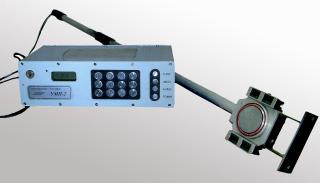
Ultrasonic level gauge UMP-2
- designed to measure the level of filling of light petroleum products in railway tanks
- allows measurements to be carried out without opening the tank without removing the composition from under the contact wire
- has small dimensions and weight
- powered by a built-in accumulator
- allows to convert the filling height to volume for extended types of tanks
- easy to maintain
Department of Analytical Instrumentation UFY
Rostov-on-Don
Produced in: Rostov-on-Don

Tripod for determining the density of petroleum products LA-901
The use of this tripod extends the functionality of thermostats for determining the viscosity of LOIP LT-910, LOIP LT-912 and allows for density determination tests in accordance with GOST 3900-85 and GOST R 51069-97, in the temperature range -42 ...150 ° C, with an accuracy of up to ± 0.01 ° C.
The tripod works with instruments:
LOIP LT-380
LOIP LT-910
LOIP LT-912
LOIP LT-810
LOIP
Saint Petersburg
Produced in: Saint Petersburg

Sulfur Analyzer SPECTROSCAN SE
The analyzer is designed to determine the mass fraction of sulfur from 3 million-1 (ppm) in oil and petroleum products in accordance with GOST R 51947-2002, GOST 32139-2019, GOST R EN ISO 20847-2010 / GOST ISO 20847-2014, ASTM D4294, GB/T 17040-2019.
Implements an arbitration method for measuring the mass fraction of sulfur for oil, automotive fuels of class K2, K3, jet engine fuel, aviation gasoline, fuel oil and marine fuel, and is also used for operational control of sulfur content in automotive fuels of Class 4 and 5, gas oils, bitumen, lubricating oils and their components and other petroleum products.
The analyzer greatly simplifies the routine analysis procedure. Intuitive interface provides convenience and ease of use.
The analyzer is a proprietary development of NPO "SPEKTRON". The device is manufactured in St. Petersburg mainly from domestic components.
Minimum operator actions:
- calibration is selected and the name of the sample is entered;
- two cuvettes are filled with a sample;
- the obtained samples are placed in the analyzer and measurements are started;
- all subsequent actions are performed automatically:
- the average value of the mass fraction of sulfur is calculated and displayed;
- repeatability is calculated;
- the results are checked for compliance with the selected standard;
- measurement results are printed on the built-in printer and saved.
NPO Spektron
Saint Petersburg
Produced in: Saint Petersburg
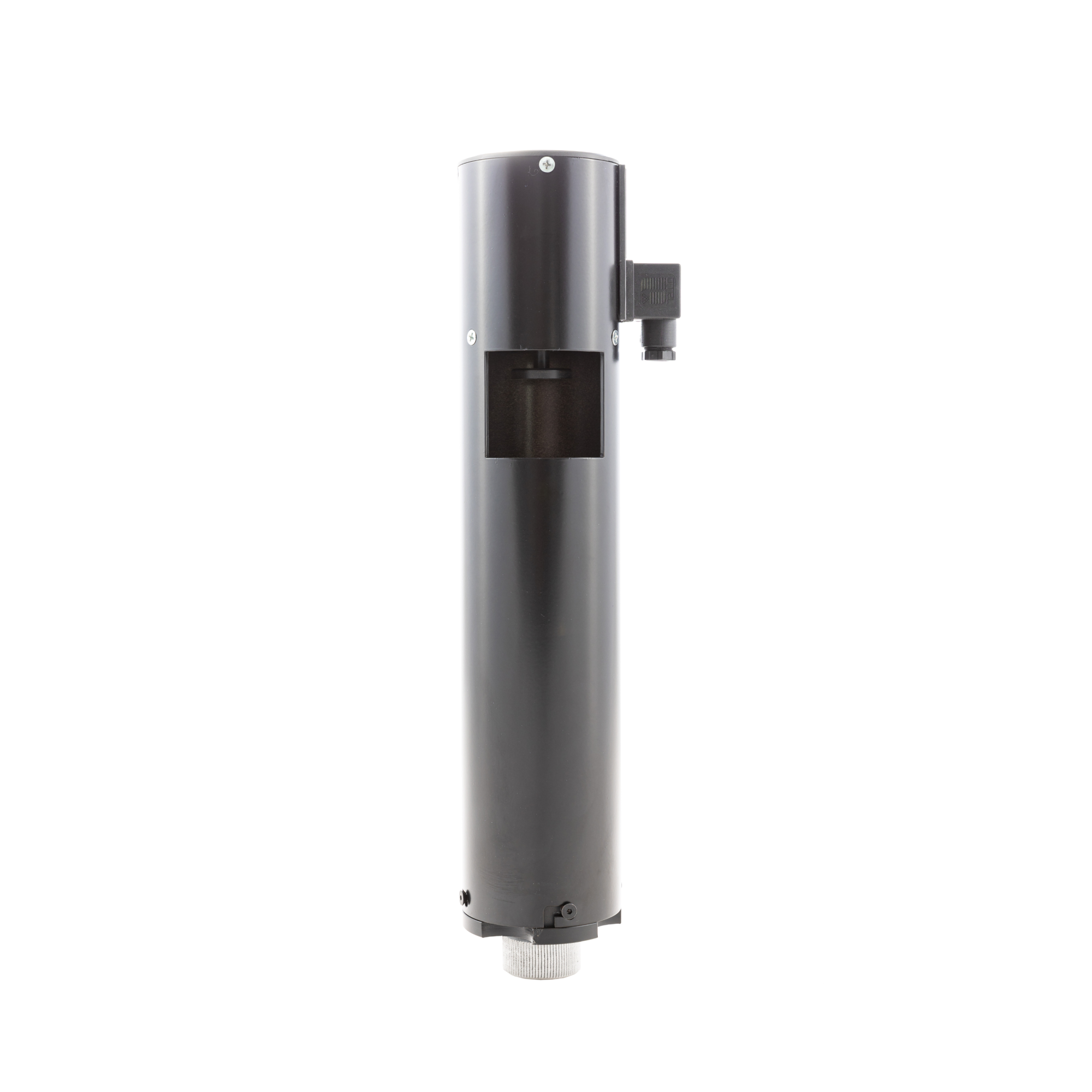
CD-1 Paint detector of defects 220V
from
50 000 ₽
The principle of operation:
The controlled extended product (pipe, rolled or wire) is passed through the working area of the flaw detector. When a defective area is detected, the flaw detector included in the automated system sends a signal to trigger the paint meter actuator, as a result of which the paint from the marker's aerosol can is applied to the surface of the controlled product through a window in the device housing.
Features and benefits:
- Any standard aerosol cans with a diameter of 68 mm can be used in the flaw detector;
- Easy replacement of the cylinder;
- The device does not require connection to the pneumatic line;
- High performance;
- The design of the CD-1 defect meter allows connection to any standard AC and DC electrical networks with rated voltages from 12 to 380 V.
Scope of application:
The CD-1 automatic paint sprayer is an auxiliary equipment and is used in conjunction with flaw detectors as part of in–line automated lines for marking defects in quality control of extended products made of various materials, ferrous and non-ferrous metals and alloys - welded, hot-rolled and cold-drawn pipes, rolled products, wire and products made of them.
The flaw detector can be used both in the production process and during input control on the consumer side at machine-building, transport, chemical and oil and gas enterprises.
*Custom-made versions for rated voltages can be of: 12, 24, 48, 110, 127, 220, 380V.
RII MNPO SPEKTR
Moscow
Produced in: Moscow
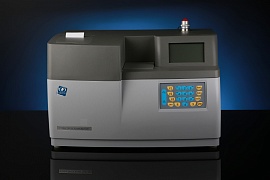
Sulfur and Metal Analyzer SPECTROSCAN MSW
Technical Regulation TR CU 013/2011 "On requirements for automotive and aviation gasoline, diesel and marine fuel, jet fuel and fuel oil" imposes requirements for the content of sulfur and metals in automotive fuel. The analyzer allows you to measure, in order to confirm the conformity of the fuel, according to the following indicators: mass fraction of sulfur, concentration of iron, manganese and lead.
The analyzer implements an arbitration method for measuring the mass fraction of sulfur in automotive fuel of the third, fourth and fifth classes according to GOST R 52660-2006 / GOST ISO 20884-2016, and also allows you to measure the mass fraction of iron, manganese and lead.
The MSW SPECTROSCOPE is designed taking into account the requirements for measuring low sulfur and metal contents in petroleum products. Meets the requirements for equipment and precision standards: GOST R 52660-2006 / GOST ISO 20884-2016, GOST R 53203-2008, GOST 33194-2014, ASTM D6334.
The design of the analyzer allows it to be used in mobile laboratories.
The operator's actions when performing measurements are minimized:
- the number/name of the sample is entered from the built-in keyboard;
- the sample is poured into two cuvettes;
- the obtained samples are placed in the analyzer and measurements are started.
The analyzer performs all subsequent actions automatically without operator involvement:
- calculates and displays the content of elements in the sample;
- calculates convergence - the difference in determining the content of elements in the first and second samples;
- prints measurement results on the built-in printer.
NPO Spektron
Saint Petersburg
Produced in: Saint Petersburg
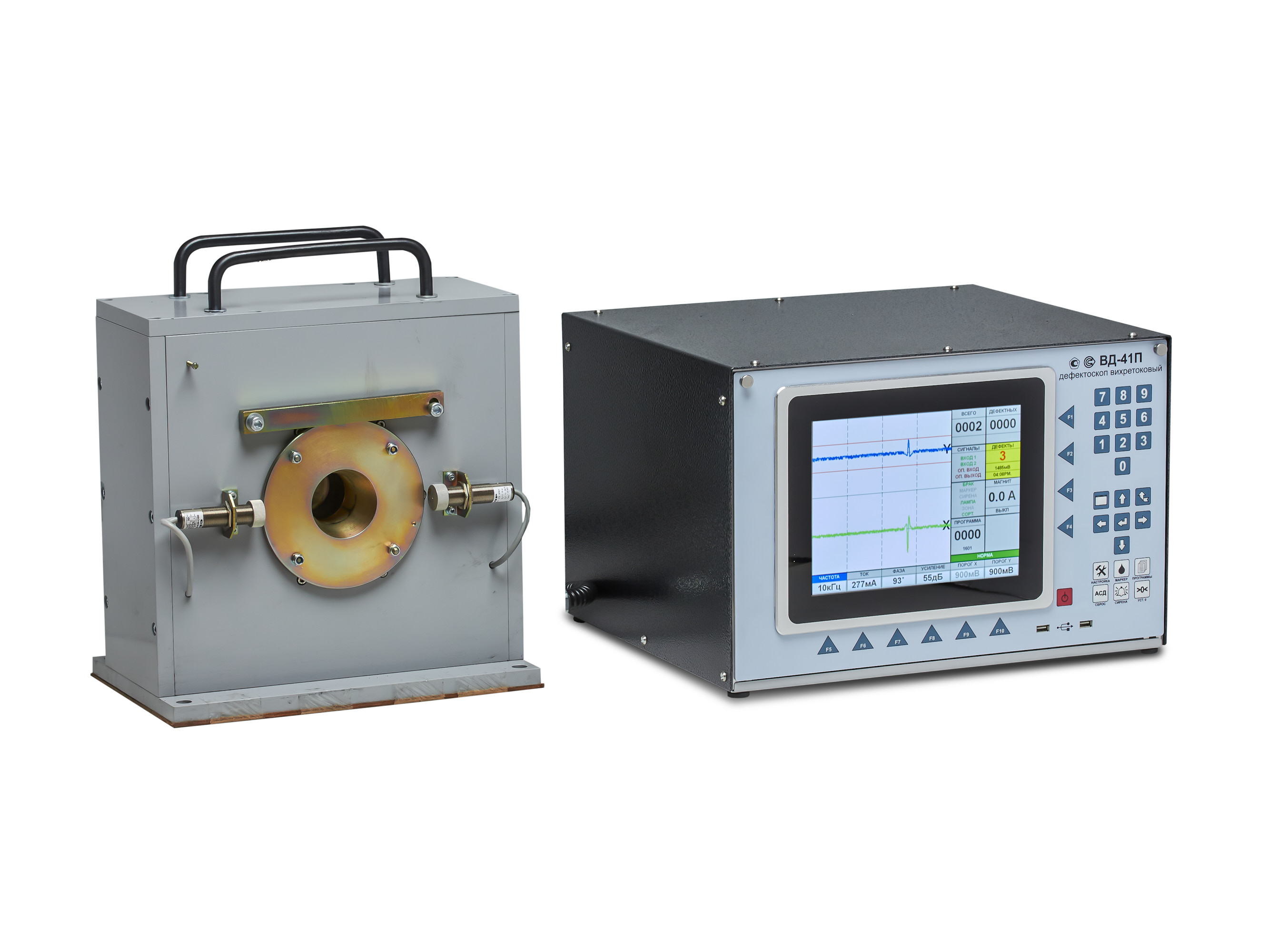
VD-41P Eddy Current Flaw Detector
Scope of application
The VD-41P eddy current flaw detector is designed to work as part of automated quality control lines at pipe-rolling and metal-rolling enterprises with continuous output control of products together with other auxiliary devices: a paint meter, a path sensor, an object presence sensor, an automatic sorter, a demagnetizer.
The device can also be used for input control at machine-building enterprises of the automotive, aviation, oil and gas, and agricultural industries.
Technical specifications:
Control frequencies: 1.0 – 100 kHz.
Control speed (line speed): 0.5 - 5 m/s.
The high-frequency filter is automatically adjustable depending on the speed.
Signal phase adjustment: 0 - 359° .
Converter current adjustment: 50 – 500mA.
Automatic monitoring of the operability of the measuring converter.
Data processing:
- Software adjustable filter.
- Signal evaluation using signal masks:
- circular mask,
- sector masks.
- Sorting by control results.
Display: 10.2” (26 cm) touch LCD (800x600).
Operating system used: WINDOWS® 7.
Dialog language: Russian, other languages (optional).
Applicable eddy current converters: overhead type, through type, sector type.
Interfaces:
- Connector for the converter unit.
- External automation control connector.
- 4 outputs with delay adjustment - "dry contact".
- 2 external information inputs.
- VGA interface for connecting an external monitor.
- USB 2.0.
- Network: Ethernet (TCP/IP).
- Other interfaces on special order.
Power supply: 220 V, 50 Hz.
Operating temperature range: 0 to +40°C.
Type of climatic performance - UHL 4 (i.e. for moderate and cold climate).
Enclosure protection degree: IP 53.
Dimensions, w/h/d: 471 x 285 x 460 mm / can be built in a 19” rack/cabinet.
Weight: approx. 20 kg.
RII MNPO SPEKTR
Moscow
Produced in: Moscow
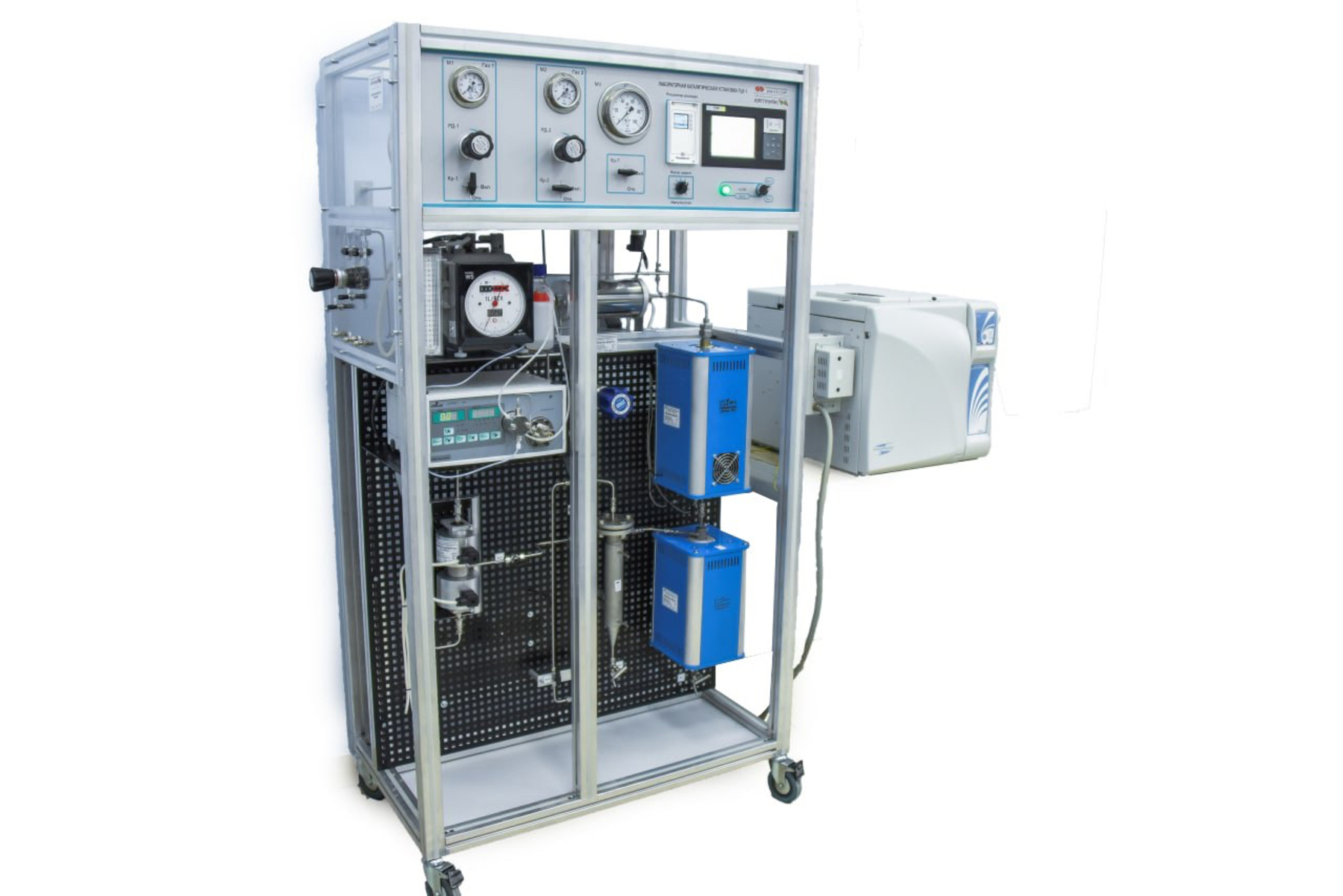
PCU-1 Laboratory catalytic unit
The PCU-1 laboratory catalytic unit is designed to perform the following tasks:
1. Educational and scientific research of chemical processes;
2. Improvement of current industrial processes and development of new ones;
3. Studies of homogeneous and heterogeneous catalysts.
The PCU-1 laboratory catalytic unit is manufactured in accordance with the technical requirements of customers so as to correspond to a wide range of technological parameters. Additionally, embedded equipment is designed to control the flow of raw materials and products, as well as data collection and processing. The unit can be subsequently modernized for new purposes.
Main advantages:
1. A reliable and high-precision system of control and regulation of technological parameters;
2. Easy replacement of catalyst samples;
3. The possibility of conducting long-term tests in continuous mode;
4. The possibility of upgrading the unit for new purposes;
5. The possibility of conducting tests in flow and flow-circulation modes;
6. Control and accurate reproduction.
YURGPU(NPI) FGBOU VO "YURGPU(NPI) IMENI M.I.PLATOVA"
Novocherkassk
Produced in: Rostov region, Novocherkassk
